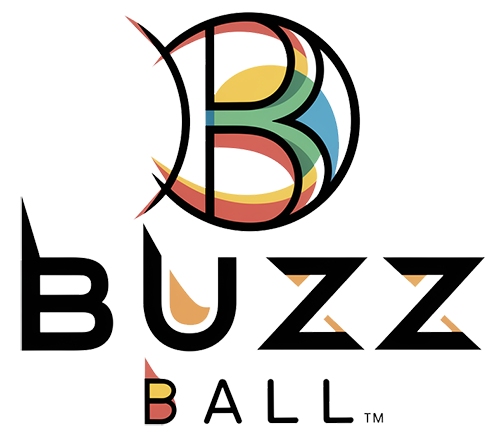
Introduction: My Wallet Confusion
How to Create a Crypto Wallet: Let me tell you something embarrassing. The first time I heard someone say “crypto wallet,” I literally pictured a shiny leather wallet with a Bitcoin logo stamped on it. Like, maybe Louis Vuitton’s future collection. Yeah, not even close.
Fast forward a couple of years and suddenly I’m the guy people text at midnight: “Hey bro, how do I make one of those wallets? I just bought some Ethereum, and I don’t wanna lose it.” I’ve been there. I remember fumbling through pop-ups, freaking out over seed phrases, and clicking the wrong buttons more times than I want to admit.
The good news? In 2025, things are way easier. Wallet apps are smoother, security is stronger, and the instructions don’t feel like they’re written in alien code anymore. But—there’s always a “but”—it still pays to know the basics before you dive in. So if you’re new to this world, buckle up. I’ll walk you through how to create a crypto wallet without losing your mind (or your coins).
What Even Is a Crypto Wallet?
Alright, picture this: You’ve got a car sitting in a giant public parking lot. Everyone can see it’s there. But only you can drive it—if you’ve got the key.
That’s exactly what a crypto wallet is. The coins live on the blockchain (the giant parking lot). The wallet? That’s your keyring. Without the key, your coins are just… sitting there, untouchable.
But here’s the kicker: your wallet doesn’t actually “hold” your coins. It holds your private keys—the secret codes that prove you own them.
Two Big Wallet Types
-
Hot Wallets (online): Apps or browser extensions like MetaMask, Trust Wallet, Coinbase Wallet. Super convenient, quick to set up, but always connected to the internet (a little riskier).
-
Cold Wallets (offline): Hardware gadgets like Ledger Nano X or Trezor. Safer because they’re offline, but you need to keep track of them like you would your house keys.
Step 1: Figure Out Your Goal
This part sounds boring, but trust me—knowing why you need a wallet saves headaches.
-
Trading every day? You’ll want a hot wallet.
-
Just stacking Bitcoin and chilling for the long haul? Cold storage.
-
Into NFTs? Make sure your wallet works with marketplaces like OpenSea.
When I started, I thought one wallet could do it all. Spoiler: it doesn’t. Start with one, keep it simple. You can always add another later.
Step 2: Pick the Right Wallet
This part feels like picking a new phone plan. Everyone swears their choice is “the best.” Honestly, it depends on what you’re doing.
Here are some 2025 favorites:
-
MetaMask – Great for Ethereum and Web3 apps.
-
Coinbase Wallet – Beginner-friendly, works well if you’re already using Coinbase exchange.
-
Trust Wallet – Handy on mobile, supports a ton of different coins.
-
Ledger Nano X / Trezor Model T – Hardware wallets for serious long-term storage.
Warning: Only download from official sites or app stores. There are fake apps everywhere that look real but are just traps. One wrong click and boom—your coins are gone.
Step 3: Install (Don’t Overthink It)
Once you’ve chosen your wallet:
-
Double-check the URL. Triple-check if you’re paranoid (I am).
-
Download the app or extension.
-
Install it like any other app.
Easy part’s done. Now comes the serious stuff.
Step 4: Meet the Seed Phrase
This is where it gets real. When you first set up your wallet, it’ll spit out 12 or 24 random words. That’s your seed phrase (or recovery phrase).
It looks silly, like some weird poetry: donkey, spoon, galaxy, carpet… but don’t let the randomness fool you. That list of words is the master key to your wallet.
-
Lose it = you lose your wallet forever.
-
Share it = you just gave someone else full control.
My rookie mistake? I took a screenshot of mine. Genius, right? Until I realized if anyone hacks my phone, they basically own my wallet. Best practice? Write it down. On paper. Hide it somewhere safe. Old-school but foolproof.
Step 5: Add Some Crypto
Now you’ve got a wallet—but an empty one is pretty sad. Time to fill it.
Options:
-
Buy inside the wallet app (some allow direct purchase).
-
Transfer from an exchange like Binance or Coinbase.
-
Receive from a friend (my first wallet had $5 of ETH from a buddy—it felt like gold).
Your wallet will give you a public address—like your crypto mailing address. That’s what you share when someone sends you funds. Just don’t confuse it with your private key. That’s like giving out your house key.
Step 6: Click Around and Learn
Spend some time exploring the app. Check your balances, look at transaction history, find the settings. The more familiar you are, the less likely you’ll panic later.
True story: I once hit “swap” thinking I was just moving ETH to another wallet. Nope. I swapped half my ETH into some random meme coin. Thought I was rich until I realized nobody wanted it. Lesson learned.
So, start small. Send yourself $10. Play with it. Better to screw up small than lose big.
Step 7: Lock It Down
Security matters. Crypto isn’t like a bank where you can just call customer service.
-
Use a strong password. Not “ilovecrypto123.”
-
Turn on two-factor authentication (2FA).
-
Never, ever share your seed phrase.
If you’re holding a serious amount, buy a hardware wallet. It’s the difference between hiding your cash under the mattress and putting it in a safe.
Rookie Mistakes (a.k.a. Stuff I Did Wrong)
-
Sending to the wrong network. Sent ETH to a Bitcoin address once. Gone forever.
-
Forgetting gas fees. Tried to move $40 worth of tokens, only to find the fee was $45. Brutal.
-
Trusting strangers online. If someone promises “guaranteed profits,” it’s a scam. Period.
FAQs
Q1: Do I need money to make a wallet?
Nope! Creating a wallet is free. You only need money if you want to actually use it.
Q2: What happens if I lose my seed phrase?
You’re done. There’s no reset button. That’s the whole point of decentralization—you’re the only one in control.
Q3: Can I have more than one wallet?
Absolutely. Lots of people keep one hot wallet for everyday use and one cold wallet for savings.
Q4: What’s the best wallet for beginners in 2025?
MetaMask and Coinbase Wallet are still the easiest to start with. If security worries you, grab a Ledger too.
Final Thoughts: Don’t Stress It
If I could tell my past self one thing, it’d be this: don’t overthink it. Setting up a crypto wallet isn’t rocket science. The scariest part is just knowing that you’re responsible. There’s no “reset password” safety net. And yeah, that can feel intimidating.
But it’s also the coolest part. For the first time, you’re your own bank. You decide what happens to your money. No middlemen, no waiting days for a transfer. Just you, your wallet, and the blockchain.
So take a deep breath, write down that seed phrase, and start small. Send a couple bucks. Mess around. Laugh at your mistakes. That’s how everyone learns.
And one day, when your cousin texts you at midnight asking, “Hey, how do I make a wallet?”—you’ll have your own war stories to tell.




